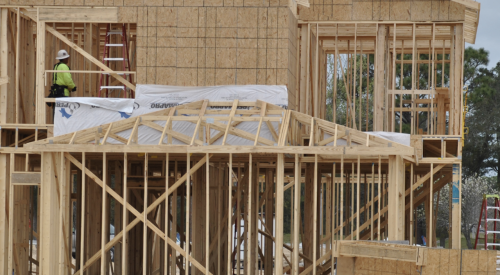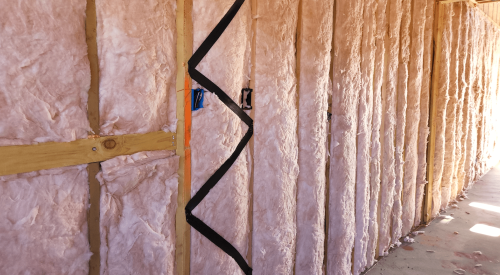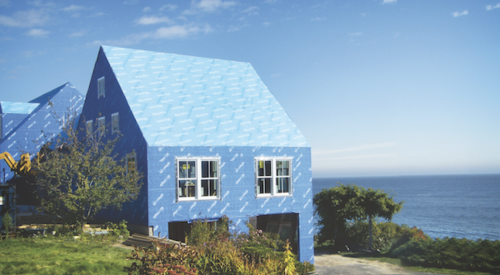Katrina. Rita. Wilma. The hurricanes of 2005 dramatically illustrate the importance of building durable, disaster-resistant homes.
As rebuilding begins in the South, the Partnership for Advancing Technology in Housing (PATH) suggests some changes in building materials and practices that will make new homes more flood-resistant. PATH's recommendations are based on findings from the Oak Ridge National Laboratory (ORNL). Also included are recommendations from FEMA.
FEMA RecommendationsFEMA defines flood-resistant material as any building material capable of withstanding direct and prolonged contact — 72 hours or more — with floodwaters without sustaining significant damage that requires more than low-cost cosmetic repair.
To qualify how well materials meet this standard, FEMA uses a classification system with 1 through 5 rankings. Class 5 is defined as "highly resistant to floodwater damage. Materials within this class are permitted for partially enclosed or outside uses with essentially unmitigated flood exposure." Class 1 materials are not resistant.
For structures below the base flood elevation in flood-prone areas, FEMA says only Class 4 and Class 5 materials are acceptable. However, materials in other classes are deemed acceptable when specifically required to meet building code provisions that cite health and safety issues.
Within these rankings, FEMA separates housing construction materials into two categories: flooring materials and wall and ceiling materials.
For flooring materials, clay and concrete tiles, as well as precast and in-situ concrete, are ranked as Class 5, the most flood resistant. Other materials — such as asphalt tile, cork, linoleum, vinyl and wood flooring — are ranked Class 1, 2 or 3, and are therefore not flood-resistant by FEMA's definition. Materials in these classes are or contain wood products, they restrict evaporation, are dimensionally unstable or their adhesives are water soluble.
The best-performing wall and ceiling materials according to FEMA are brick, cement board, metals and glass. For those preferring wood, pressure-treated and naturally decay-resistant solid wood is Class 5 material, as is marine-grade and pressure-treated plywood.
PATH RecommendationsWhile FEMA has a very practical classification system, it is based on a somewhat limited definition: components, materials and systems must be able to withstand prolonged contact with flood water without requiring more than cosmetic repair.
ORNL expanded that definition to include materials that do not degrade adjacent materials or systems of which the materials are a part. The cost of repair should be less than the cost of replacement, and the material should be resistant to microbes, organisms and toxic materials that could harm human health.
In June 2004, ORNL released a study on field tests of flood-resistant housing materials based on this expanded definition. PATH has developed recommendations from the ORNL study:
- Siding. Fiber cement or vinyl siding resist flood damage far more effectively than traditional hardboard lap and plywood siding. Fiber cement and vinyl dry more quickly and are also termite resistant. And while fiber cement siding is more expensive than vinyl, it is also non-combustible; can be warranted for 50 years; and holds paint much longer than hardboard and plywood siding.
Substituting trim and corner boards made of plastic or wood/plastic composite is likely to be more cost-effective than having to replace sawn wood trim after a flood. - Sheathing and insulation. Plywood sheathing with flood- and damage-resistant lap siding dries much better than plywood sheathing covered with plywood siding. If the area is prone to wind-driven rain, a builder should incorporate a drainage plane behind the siding to allow water to drain quickly. Construct a drainage plane by spacing the siding or use new, weather-resistant barriers with structures that facilitate drainage.
Avoid using fiberglass batt or other moisture-retaining insulation in the exterior cavity and subfloor, which will prevent wooden walls and floors from drying. Use rigid foam insulation, especially as an outer layer of insulation, instead.
Even more effective is spray polyurethane foam insulation, which resists moisture and seals the walls. Spray polyurethane is much more expensive than fiberglass batt, but it also seals air leaks, which will increase the home's energy efficiency and reduce entry points for pests. - Drywall. Water-resistant, fiber-reinforced gypsum can generally be restored to preflood conditions with only cosmetic restoration. Standard gypsum board that is able to dry completely can generally be restored to preflood conditions with similar treatment; however, board that has soaked too long probably harbors mold and will need to be replaced. If you choose standard gypsum wallboard, pick one with a non-paper skin.
- Wall finishes. Standard drywall compound and paper joint tape perform very poorly under flood conditions. Quick-setting joint compound and fiberglass tape are generally a great improvement. When used with water-resistant gypsum sheathing and quality paint, these materials should require minimal repair.
- Exterior doors and windows. When selecting door types and materials, most exterior doors and vinyl and aluminum frame windows can generally be restored to pre-flood conditions with minimal effort, but do not fill the joints between the outside of the door or window frame and the rough opening with compressed fiberglass insulation, which may retain excessive moisture. Fill with low-expansion foam instead.









